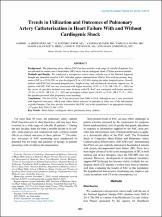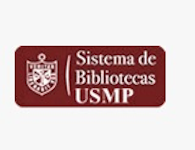Trends in utilization and outcomes of pulmonary artery catheterization in heart failure with and without cardiogenic shock

Ver/
Trabajo
(application/pdf: 275.2Kb)
(application/pdf: 275.2Kb)
Fecha
2019-05Autor(es)
Hernandez, Gabriel. A.
Lemor, Alejandro
Blumer, Vanessa
Rueda, Carlos A.
Zalawadiya, Sandip
Stevenson, Lynne W.
Lindenfeld, Joann
Metadatos
Mostrar el registro completo del ítemResumen
Background
The pulmonary artery catheter (PAC) has been used in a wide range of critically ill patients. It is not indicated for routine care of heart failure (HF), but its role in cardiogenic shock (CS) has not been clarified.
Methods and Results
We conducted a retrospective cohort study with the use of the National Inpatient Sample and identified a total of 9,431,944 adult patients admitted from 2004 to 2014 with the primary diagnosis of HF (n = 8,516,528) or who developed CS (n = 915,416) during the index hospitalization. Overall, patients with PAC had increased hospital costs, length of stay, and mechanical circulatory support use. In patients with HF, PAC use was associated with higher mortality (9.9% vs 3.3%, OR 3.96; P < .001) but the excess of mortality declined over time. In those with CS, PAC was associated with lower mortality (35.1% vs 39.2%, OR 0.91; P < .001) and in-hospital cardiac arrest (14.9% vs 18.3%, OR 0.77; P < .001); this paradox persisted after propensity score matching.
Conclusions
The use of PAC in CS has decreased from 2004 to 2014, although its use is now associated with improved outcomes, which may reflect better selection of patients or better use of the information to guide therapies. Our data provide reassurance that PAC use in this population is an appropriate strategy.
Colecciones
- Artículos [274]
Editor
Elsevier B.V.
Acceso
info:eu-repo/semantics/openAccess







